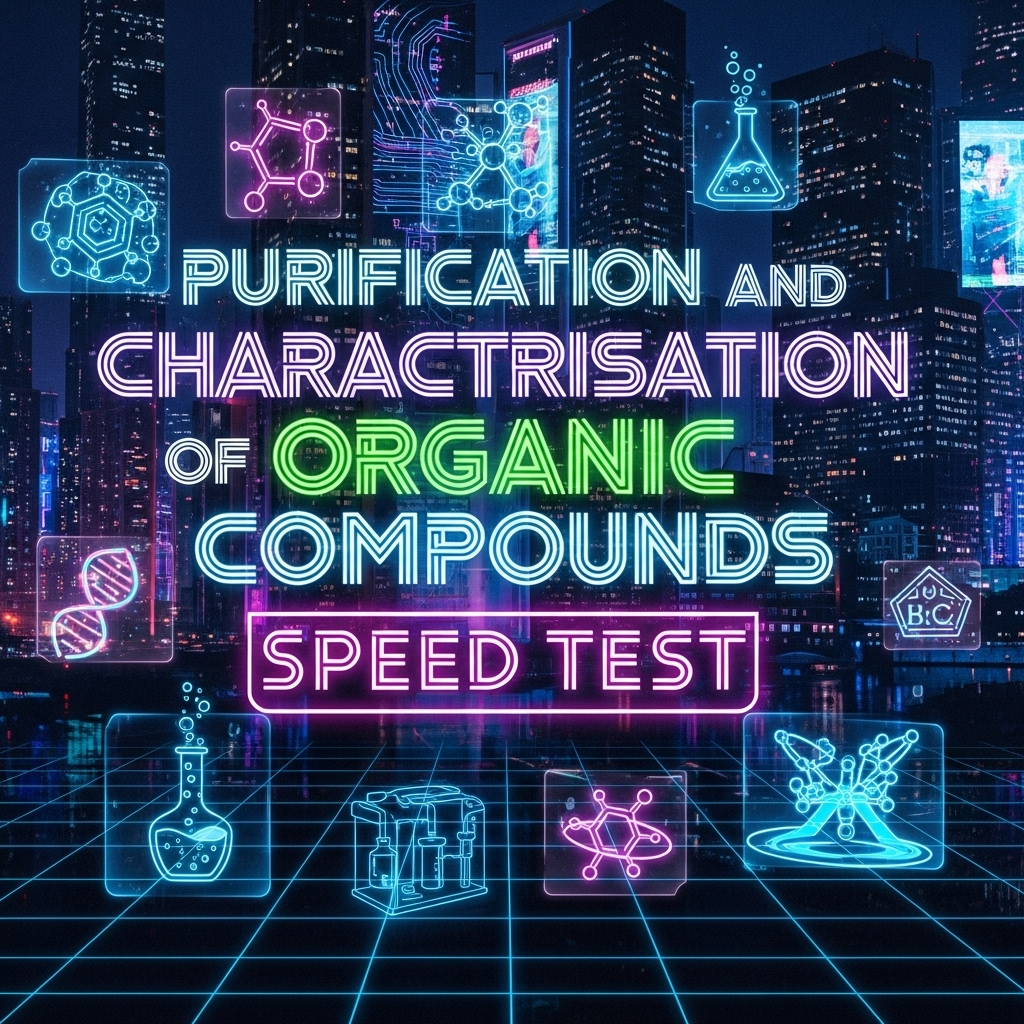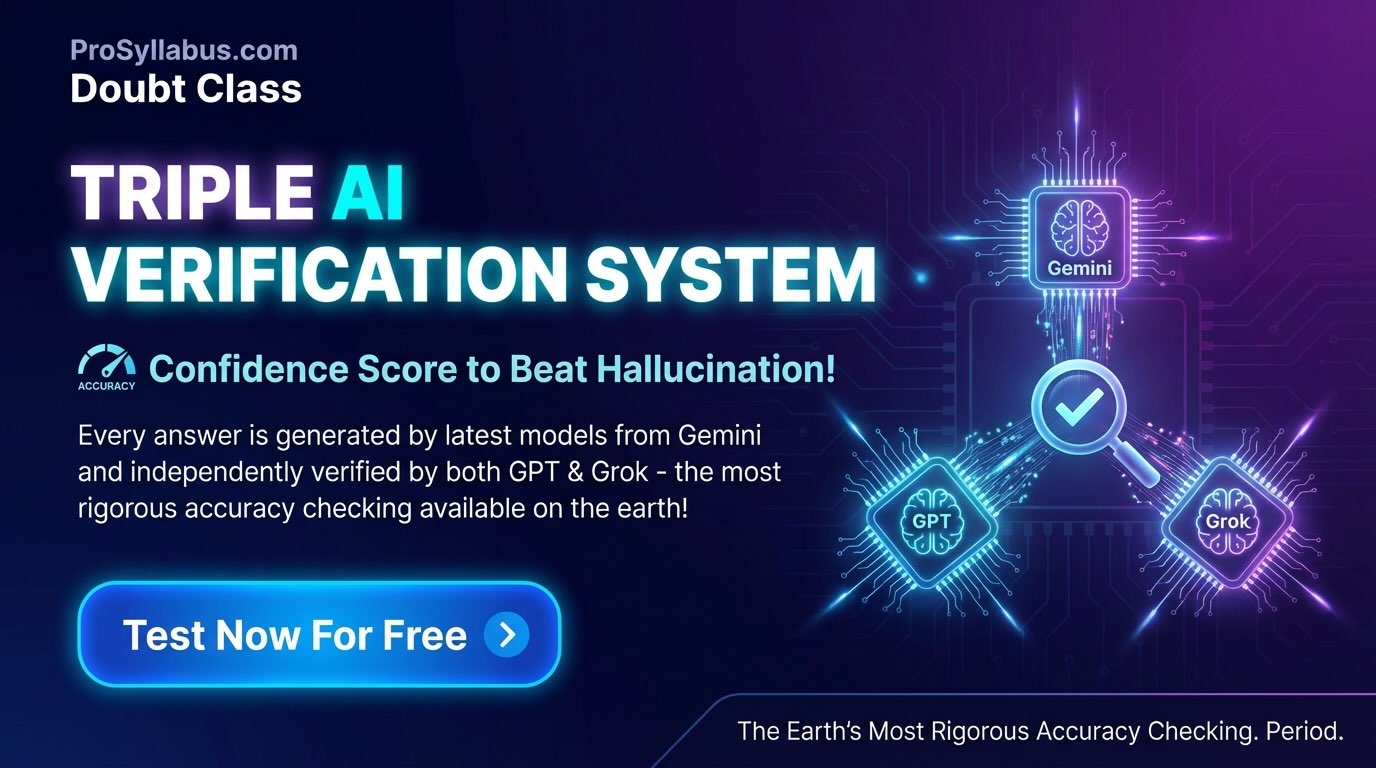Purification and Characterisation of Organic Compounds – Interactive Quiz & Cheatsheet
Master the techniques for purifying and identifying organic compounds with this engaging quiz and guide
Updated: 3 months ago
Categories: Mini Game, Chemistry, Class 11, Organic Chemistry

Purification and Characterisation of Organic Compounds Cheatsheet
Cheat Codes & Shortcuts
- Definition: Purification isolates a compound; characterisation determines its structure and properties.
- Crystallisation: Dissolve in hot solvent, cool to form crystals.
- Distillation: Separate based on boiling point differences.
- Chromatography: Separates based on differential adsorption or partitioning.
- Melting Point: Indicates purity; sharp for pure compounds.
- Boiling Point: Used for liquid identification and purity check.
- IR Spectroscopy: Identifies functional groups via absorption bands.
- NMR Spectroscopy: Provides structural info via proton or carbon signals.
- Mass Spectrometry: Determines molecular weight and structure.
- Elemental Analysis: Confirms molecular formula via C, H, N percentages.
Quick Reference Table
| Technique | Principle | Application |
|---|---|---|
| Crystallisation | Dissolve in hot solvent, cool to crystallise | Purify solids like benzoic acid |
| Simple Distillation | Boiling point difference > 25°C | Separate ethanol from water |
| Column Chromatography | Differential adsorption on stationary phase | Separate plant pigments |
| IR Spectroscopy | Absorption of IR by functional groups | Identify C=O, O-H bonds |
| NMR Spectroscopy | Resonance of nuclei in magnetic field | Determine C-H framework |
| Mass Spectrometry | Ionisation and mass-to-charge ratio | Find molecular weight |
Advice
First Step: Choose purification method based on compound properties (solid/liquid, solubility).
Solvent Selection: For crystallisation, use solvent where compound is soluble when hot, insoluble when cold.
Check Purity: Use melting/boiling point; impure compounds have broader ranges.
Spectroscopy: Combine IR, NMR, and MS for complete structural analysis.
Verify: Cross-check results with elemental analysis for molecular formula.
Purification and Characterisation Quick Tips
- Crystallisation: Use minimum hot solvent for best yield.
- Distillation: Fractional for close boiling points (<25°C difference).
- Chromatography: Adjust solvent polarity for better separation.
- IR Spectroscopy: Look for characteristic peaks (e.g., 1700 cm⁻¹ for C=O).
- NMR: Use integration and splitting to deduce structure.
Purification and Characterisation Speed Quiz
Test your speed with 5 purification and characterisation questions! You have 30 seconds per question.
Question: 1/5
Time left: 30s
Quiz Complete!
Your Score: 0/5

Group Discussions
No forum posts available.


